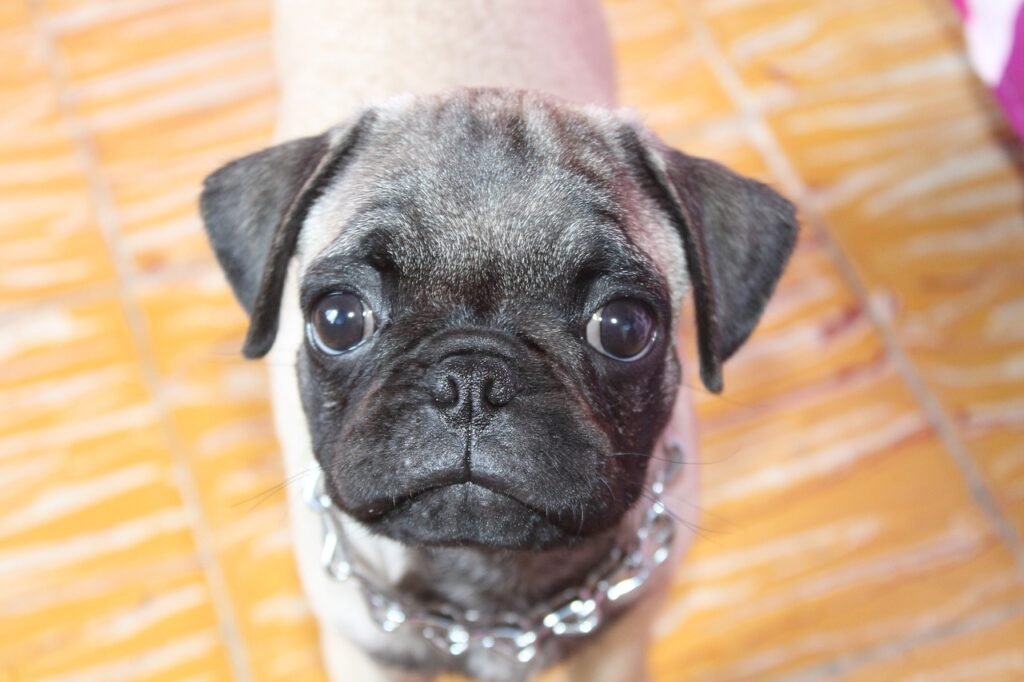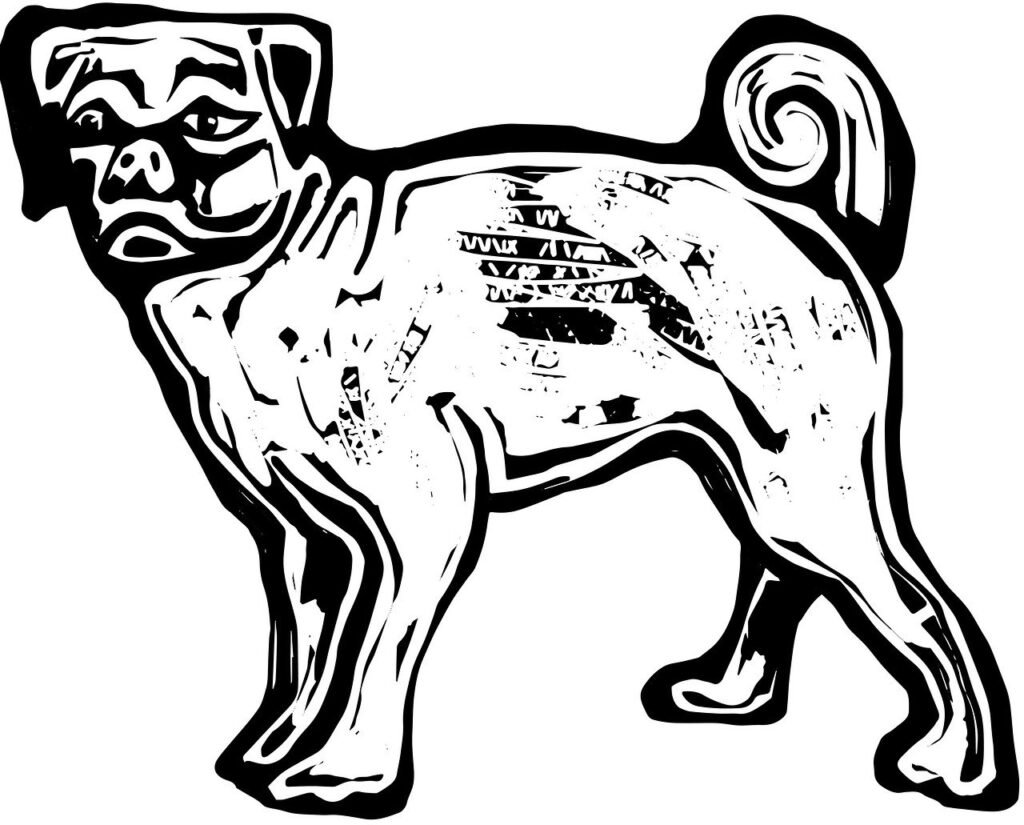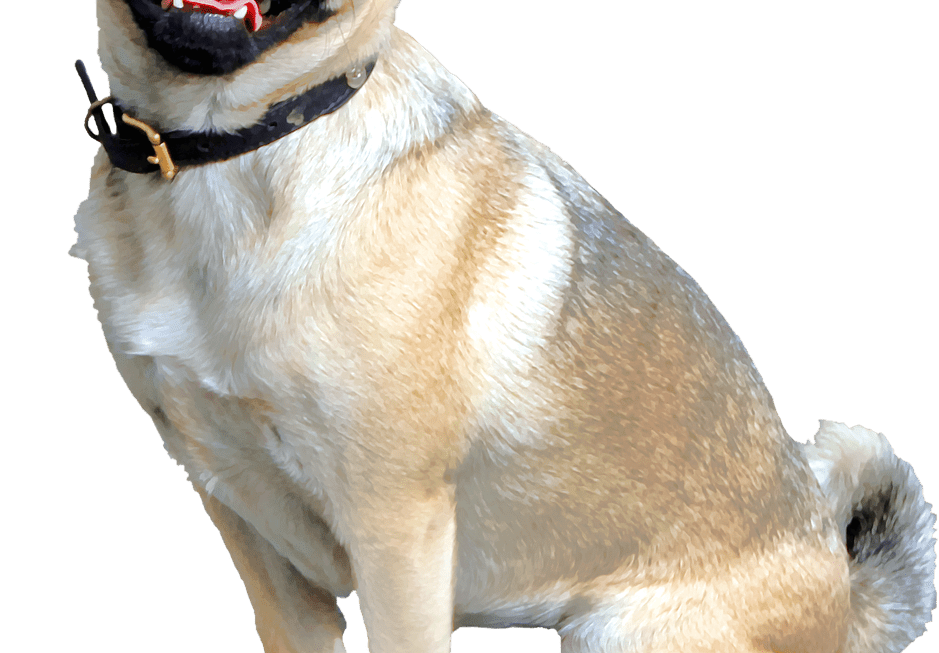If you’re a pug enthusiast looking to bring adorable pug puppies into the world, it’s important to approach the breeding process with responsibility and care. This guide to responsible pug breeding practices will provide you with essential information and helpful tips to ensure that the process is carried out in the best interest of the pugs and their future offspring. From selecting the right breeding pair to providing proper healthcare during pregnancy, this article will guide you step by step towards becoming a responsible pug breeder and contributing to the well-being of this delightful breed.

This image is property of pixabay.com.
Selecting Suitable Pugs for Breeding
Breeding pugs is an exciting and rewarding endeavor, but it requires careful consideration and planning. The first step in responsible pug breeding is selecting suitable pugs to produce healthy and well-rounded offspring. To ensure the best possible outcomes, several factors need to be taken into account, including health evaluation, temperament assessment, and genetic testing.
Health Evaluation
The health of the breeding pugs should be the top priority. Before breeding, it is essential to evaluate both the male and female pugs for any underlying health issues. This includes conducting thorough health screenings, such as hip and elbow evaluations, eye examinations, and heart tests. Only pugs that pass these health evaluations should be considered for breeding to minimize the risk of passing on hereditary diseases to their offspring.
Temperament Assessment
Pugs are known for their friendly and affectionate nature, so it is vital to choose breeding pugs with a stable temperament. Temperament assessments can help determine if the pugs display the desired traits and characteristics, such as being sociable, adaptable, and well-behaved. By selecting pugs with excellent temperaments, you can increase the chances of producing balanced and well-adjusted puppies.
Genetic Testing
Genetic testing is crucial in responsible pug breeding to identify any inherited diseases or genetic conditions that may be present in the breeding pair. This involves testing the pugs for specific genetic markers and mutations that may be associated with common pug health issues, such as brachycephalic airway syndrome, patellar luxation, and eye problems. By opting for genetic testing, you can make informed decisions about the breeding pair and take necessary precautions to prevent the transmission of genetic disorders to future generations.
Creating a Healthy Living Environment
Once you have selected the suitable pugs for breeding, it is essential to provide them with a healthy living environment. A nurturing environment plays a crucial role in ensuring the physical and mental well-being of the breeding pugs, which ultimately impacts the health of their offspring.
Proper Nutrition
Feeding a well-balanced and nutritious diet is essential for the overall health and wellness of the breeding pugs. A high-quality commercial dog food specifically formulated for pugs or consulting with a veterinary nutritionist can help ensure that the pugs receive the necessary nutrients for optimal health and reproductive function. Additionally, providing fresh water and monitoring their food intake can help prevent obesity and related health problems.
Regular Exercise
Regular exercise is crucial for maintaining the physical fitness and mental well-being of breeding pugs. Engaging in daily exercise, such as brisk walks or playtime, promotes good muscle tone, cardiovascular health, and mental stimulation. However, it is essential to avoid excessive or intense exercise, especially during periods when the pugs are breeding or pregnant, as it may cause unnecessary stress or strain on their bodies.
Regular Veterinary Care
Routine veterinary care is a fundamental aspect of responsible pug breeding. Regular check-ups and preventive healthcare measures, including vaccinations, deworming, and parasite prevention, help ensure that breeding pugs are in optimal health. Regular veterinary care also enables early detection and prompt treatment of any potential health issues, ensuring the well-being of the breeding pugs and enhancing the chances of producing healthy puppies.
Stress Management
Creating a stress-free environment is vital for the overall well-being of the breeding pugs. Exposure to excessive stress and anxiety can negatively impact their health and reproductive abilities. Minimizing stressors, such as loud noises, excessive heat or cold, and a chaotic living environment, can help maintain the mental and emotional stability of the breeding pugs. Providing a calm and nurturing environment will contribute to their overall happiness and increase the likelihood of successful breeding outcomes.

This image is property of pixabay.com.
Understanding the Breeding Cycle
Understanding the breeding cycle of pugs is crucial for successful breeding and maximizing the chances of pregnancy. Pugs, like other dog breeds, have distinct phases in their reproductive cycle that need to be monitored to identify the optimal time for breeding.
Identifying the Estrus Phase
The estrus phase, commonly known as the heat cycle, is the period during which the female pug is receptive to mating. It is essential to observe the female pug for signs of heat, which may include a swollen vulva, an increase in urination frequency, and changes in behavior. Understanding the duration and timing of the heat cycle is crucial in determining the ideal time for breeding and facilitating successful fertilization.
Determining the Optimal Breeding Time
Timing is everything when it comes to breeding pugs. To maximize the chances of a successful pregnancy, it is necessary to determine the precise moment when the female pug is ovulating. Various methods can be used to determine the optimal breeding time, such as monitoring changes in vaginal discharge, performing progesterone hormone tests, or utilizing advanced techniques like vaginal cytology or ultrasonography. Close collaboration with a veterinarian experienced in reproductive medicine can greatly enhance the accuracy of determining the ideal breeding time.
Overseeing the Mating Process
Once the breeding time has been determined, it is crucial to oversee the mating process carefully. Both the male and female pugs should be properly introduced and allowed to mate naturally. However, in some cases, artificial insemination may be necessary, especially if there are physical limitations or if the pugs are in different geographical locations. Regardless of the method, it is important to ensure that mating is done safely and in a stress-free environment to increase the chances of successful fertilization and pregnancy.
Pregnancy and Whelping Care
As the breeding pug progresses through pregnancy, attentive care and support are essential to ensure the well-being of the mother and the successful delivery of healthy puppies. Proper preparation and monitoring during this phase are crucial for a smooth and safe whelping process.
Providing a Comfortable Whelping Area
Creating a comfortable and safe whelping area is vital for the mother’s comfort and the successful delivery of her puppies. The whelping area should be warm, clean, and quiet, providing a secure environment for the mother and her newborns. Providing a whelping box or designated area with soft bedding, adequate space, and easy access to food and water will help facilitate the birthing process and ensure the well-being of the mother and puppies.
Monitoring the Health and Nutrition of the Pregnant Pug
During pregnancy, it is important to closely monitor the health and nutrition of the pregnant pug. Regular veterinary check-ups, including ultrasound examinations, can help ensure the mother’s well-being and monitor the growth and development of the puppies. Additionally, tailored nutrition plans for the pregnant pug, including appropriate supplements and increased caloric intake, will support her health and contribute to the healthy growth of the puppies.
Preparing for Whelping
Preparing for the whelping process involves gathering essential supplies and having a well-thought-out plan in place. Necessary supplies may include clean towels, gloves, thermal blankets, a heating pad, scissors, and several other items to assist with the delivery and care of the puppies. Familiarizing yourself with the signs of imminent labor and having emergency contact information for your veterinarian readily available will ensure that you are prepared for any unexpected situations.
Assisting with the Delivery Process
During labor, it is important to provide support and assistance to the mother pug as she delivers her puppies. While most pugs can deliver naturally without intervention, complications may arise that require immediate veterinary attention. Being knowledgeable of normal birthing processes, recognizing signs of distress, and knowing when to seek professional help is crucial for the safety and well-being of both the mother and puppies.
Caring for Newborn Puppies
After the birth of the puppies, diligent care and attention are essential. The mother should be allowed to bond with her newborns, providing them with warmth, milk, and security. Regularly monitoring the puppies’ weight and growth, ensuring their proper nursing, and maintaining a clean and hygienic environment will contribute to their healthy development. Additionally, ensuring the puppies receive early socialization and handling will help them adapt to human interaction and set the foundation for their future well-being.

This image is property of pixabay.com.
Preventing Genetic Disorders
Preventing the occurrence of genetic disorders in pugs is a key responsibility of ethical breeders. By implementing specific strategies and measures, breeders can reduce the likelihood of passing on hereditary diseases to future generations.
Researching Bloodlines
Thorough research into the bloodlines of the breeding pugs is essential to identify any potential genetic risks. Understanding the health history and lineage of both the male and female pugs can help uncover any inherent health problems that may be present. By selecting pugs with healthy bloodlines and avoiding those with a history of genetic disorders, breeders can significantly reduce the chances of passing on hereditary diseases to their offspring.
Avoiding Inbreeding
Inbreeding, or breeding closely related dogs, should be avoided to minimize the risk of genetic disorders. Breeding pugs with close blood relations significantly increases the likelihood of inherited health problems. Responsible breeders strive to maintain genetic diversity within the breed by selecting mates that complement each other’s strengths and weaknesses while minimizing the potential for genetic disorders.
Screening for Genetic Diseases
Genetic screening is an essential tool in responsible pug breeding to identify any potential genetic diseases or health conditions that may be present in the breeding pair. Specific tests are available to screen for a range of genetic disorders commonly associated with pugs, such as progressive retinal atrophy, von Willebrand’s disease, or degenerative myelopathy. Regular genetic screening and ongoing monitoring can help identify carriers of genetic diseases and enable breeders to make informed decisions regarding breeding suitability.
Consulting with a Veterinary Geneticist
In-depth consultation and collaboration with a veterinary geneticist can provide invaluable insights into the genetic health of the breeding pugs. Geneticists can help interpret genetic test results, assess the overall risk of inherited diseases, and provide recommendations for responsible breeding practices. By seeking expert advice, breeders can navigate the complex field of genetics and make informed decisions to prevent the transmission of genetic disorders.
Placing Puppies in Responsible Homes
Finding suitable homes for the newborn puppies is a crucial responsibility of ethical breeders. It is essential to ensure that the puppies are placed in loving and responsible homes where they will receive proper care, attention, and a lifetime of happiness.
Creating a Puppy Adoption Process
Developing a thorough and comprehensive puppy adoption process is essential to ensure that potential owners are suitable and committed to providing a loving home for a pug. This may involve requiring potential owners to complete an application, undergo interviews, and provide references. By implementing a well-structured adoption process, breeders can assess the suitability of potential owners and select homes that meet the needs and best interests of the puppies.
Interviewing Potential Buyers
Interviewing potential buyers is an opportunity to get to know them better and assess their suitability as future pug owners. During the interview process, breeders can ask questions about the potential owners’ lifestyle, previous experience with dogs, and their understanding of the responsibilities involved in owning a pug. Open and honest communication is key to ensure that the puppies are placed in homes where they will be cherished and well-cared for.
Screening for Suitable Homes
Screening potential homes is crucial to ensure that the puppies will be placed in a suitable and nurturing environment. Breeders should consider factors such as the potential owners’ living situation, availability of necessary resources, and their commitment to providing lifelong care for the pug. By conducting thorough screenings, breeders can make informed decisions and ensure that their puppies will grow up in responsible and caring homes.
Providing Necessary Documentation
Before handing over the puppies to their new owners, breeders should provide appropriate documentation and records to ensure transparency and accountability. This may include health certificates, vaccination records, genetic test results, and the puppies’ pedigrees. Providing this information gives new owners peace of mind and demonstrates the breeder’s commitment to transparency and responsible breeding practices.
Educating New Owners
Education plays a vital role in responsible pug breeding, and it extends to the new owners of the puppies. Breeders should take the time to educate new owners on proper pug care, grooming needs, and nutrition requirements. They can also provide guidance on training, socialization, and health maintenance. By sharing knowledge and resources, breeders contribute to the overall well-being and happiness of the puppies throughout their lives.
Educating the Public About Pugs and Breeding Ethics
As a responsible pug breeder, it is essential to educate the public about the breed and promote responsible breeding practices. By actively engaging in education and raising awareness, breeders can play a vital role in safeguarding the health and welfare of pugs.
Promoting Responsible Breeding
Responsible breeders should actively promote and advocate for responsible breeding practices within their communities. This includes emphasizing the importance of health testing, genetic screening, and responsible breeding selection. By sharing their own experiences and knowledge, breeders can inspire and educate others on the critical aspects of responsible breeding that prioritize the well-being of the breed.
Raising Awareness About Pug Health Issues
Pugs are prone to specific health issues, such as brachycephalic airway syndrome, eye problems, and orthopedic conditions. Responsible breeders should actively raise awareness about these health concerns and educate the public on the steps taken to minimize their impact on the breed. Sharing information about health screenings, genetic testing, and the importance of maintaining a healthy breeding population can contribute to the overall well-being of the breed.
Sharing Information through Online Platforms
Utilizing online platforms, such as websites, blogs, and social media, is an effective way for breeders to share valuable information and educate a broader audience. By providing accurate and informative content about pugs, responsible breeding practices, and health-related issues, breeders can reach a wide range of people who may be considering pug ownership or interested in responsible breeding.
Participating in Community Events
Engaging with the local community through participation in events, such as breed shows, education seminars, or charity fundraisers, can help breeders promote responsible pug breeding practices. These events provide opportunities to share knowledge, interact with the public, and raise awareness about pugs and responsible breeding ethics. By being actively involved in the community, breeders can inspire others to become responsible dog owners and encourage ethical breeding practices.
Building a Supportive Breeding Network
Building a supportive network of fellow breeders is an invaluable resource for responsible pug breeders. Connections with experienced breeders can offer mentorship, guidance, and the opportunity to share knowledge and resources.
Joining Pug Breed Clubs or Associations
Pug breed clubs and associations provide a platform for breeders to connect with like-minded individuals and share advice and experiences. Joining these organizations allows breeders to access a wealth of knowledge, attend educational events and seminars, and collaborate with experienced breeders. The knowledge gained from interacting with fellow breeders can help shape and improve breeding practices.
Attending Pug Shows and Events
Attending pug shows and events provides breeders with an opportunity to connect with other breeders and stay up to date with current trends and best practices in pug breeding. These events offer the chance to see high-quality pugs, meet experienced breeders, and engage in conversations that deepen the understanding and appreciation of the breed. By attending shows and events, breeders can foster relationships within the pug community and expand their network.
Connecting with Experienced Breeders
Establishing connections with experienced breeders is a valuable asset for responsible pug breeders. Experienced breeders have a wealth of knowledge and insights that can greatly contribute to the success of breeding practices. By seeking out mentorship or establishing collaborations, breeders can benefit from the wisdom and experience of those who have dedicated themselves to the breed for many years.
Sharing Knowledge and Resources
Responsible breeders understand the importance of sharing knowledge and resources within the breeding community. By actively participating in discussions and forums, answering questions, and providing guidance to fellow breeders, responsible breeders contribute to the collective knowledge and well-being of the breed. Sharing resources such as health research, breeding tips, and educational materials ensures that the breeding community continues to grow and thrive.
Recognizing the Limitations of Breeding
It is essential for responsible breeders to recognize and respect the limitations that come with breeding pugs. Breeding is a lifelong commitment and should only be pursued by those who are fully prepared for the responsibilities and challenges it entails.
Ensuring Breeding Pugs Are Physically and Mentally Fit
Breeding pugs should be in optimal physical and mental health to ensure the well-being of both the breeding pair and their offspring. Breeders should carefully assess the health and fitness of the pugs involved in breeding and be prepared to withhold breeding if there are any concerns. Breeding pugs that are not in prime condition can lead to complications during pregnancy, birth, and result in health issues in the offspring.
Understanding the Costs and Commitment Involved
Breeding pugs requires a significant financial investment. Responsible breeders should be prepared to cover the costs associated with health testing, veterinary care, nutrition, genetic screening, and proper care for the breeding pugs and their puppies. Additionally, the commitment of time, energy, and emotional involvement is substantial. Understanding and accepting these costs and commitments is vital for responsible breeding practices.
Being Prepared for Unexpected Outcomes
Breeding, even when done responsibly, comes with inherent risks and unexpected outcomes. There may be instances when complications arise during pregnancy, labor, or with the health of the puppies. Responsible breeders should be prepared to face these challenges, seek veterinary assistance when necessary, and make difficult decisions in the best interests of the pugs and their puppies.
Accepting Responsible Breeding as a Lifelong Journey
Responsible breeding should be seen as a continuous learning process and a lifelong commitment. Staying updated on advancements in veterinary medicine, genetics, and breeding practices is essential for adaptability and growth as a breeder. Responsible breeders should actively seek opportunities to continue their education, adapt their practices in line with the latest research, and continuously strive to improve the breed and the breeding community as a whole.
Ethical Considerations in Pug Breeding
Ethical considerations are at the core of responsible breeding practices. Breeders must prioritize the welfare of the pugs and uphold ethical standards to ensure the health and well-being of the breed.
Putting Pug Welfare First
The welfare of the pugs should always be the top priority for responsible breeders. Every decision made throughout the breeding process should be in the best interests of the pugs, ensuring their physical, mental, and emotional well-being. Responsible breeders should never compromise the welfare of the pugs for personal gain or to meet market demand.
Avoiding Overbreeding
Overbreeding, or breeding pugs excessively and without careful consideration, can have detrimental effects on the breed’s health and well-being. Responsible breeders should prioritize the long-term health of pugs and keep breeding practices in line with the breed’s best interests. Recognizing that each pug has physical limitations and ensuring appropriate rest periods between breeding cycles is essential to prevent overbreeding.
Maintaining Breeding Records and Pedigrees
Keeping accurate breeding records and pedigrees is an ethical responsibility of responsible breeders. Detailed records help maintain transparency, track the lineage of the pugs, and ensure that breed standards are upheld. Pedigrees allow breeders to make informed decisions about breeding partners, manage genetic diversity, and minimize the risk of breeding related individuals.
Prioritizing the Well-being of Breeding Pugs
Responsible breeders should prioritize the well-being of the breeding pugs throughout their lives. This includes providing a loving and nurturing environment, addressing their physical and mental health needs, and ensuring their retirement and rehoming plans are in place when they are no longer suitable for breeding. By valuing the well-being of the breeding pugs, responsible breeders set a positive example for the entire breeding community and contribute to the overall welfare of the breed.



